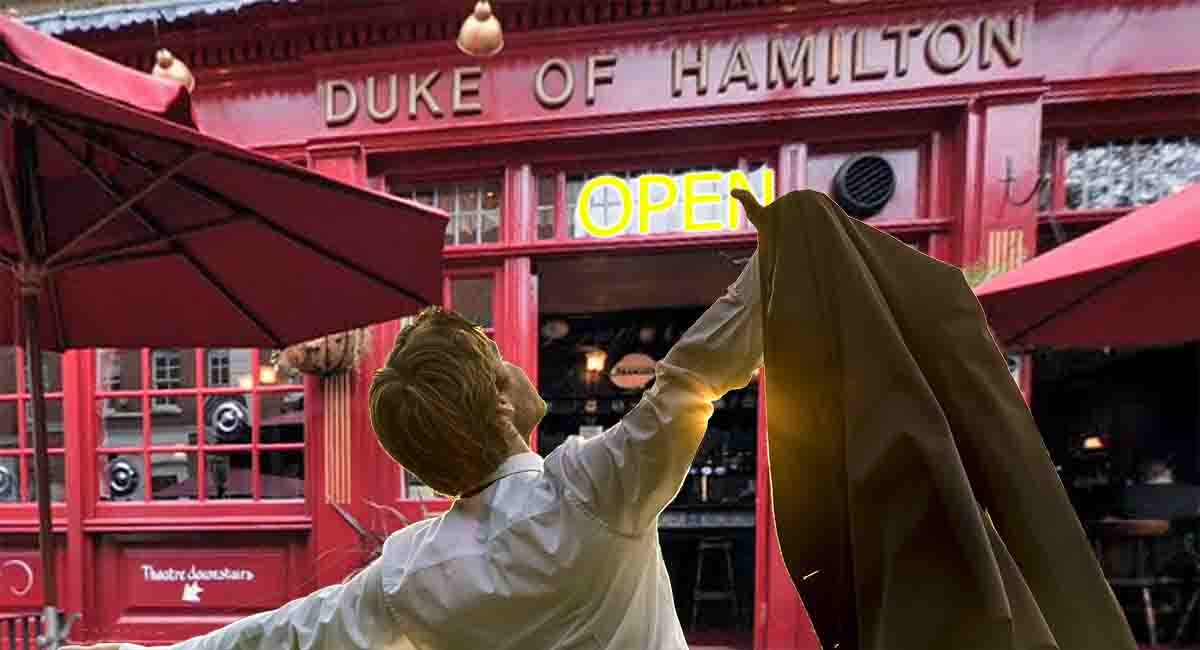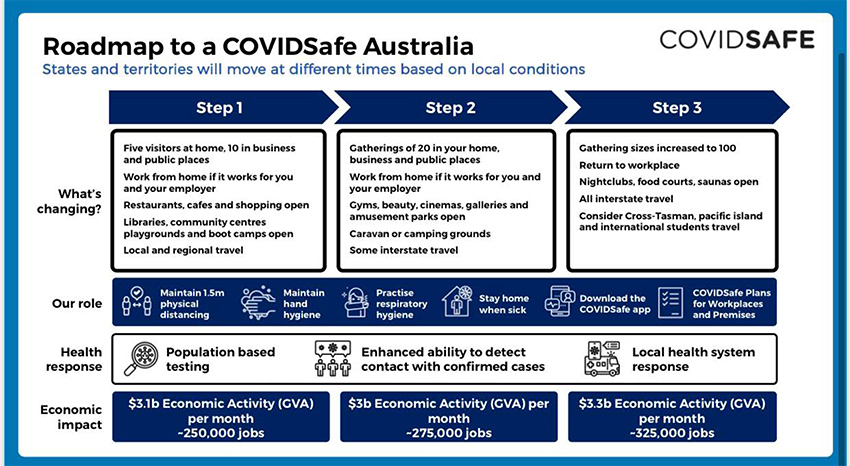
Following the Prime Minister’s announcement Friday, Australia now has a road map for the unwinding of the pandemic shutdown restrictions, although there are mixed reactions and questionable outcomes for pubs.
The national proposal sees businesses, hospitality and broader society reopen in three stages, with the third stage slated to be complete in July. At this point the plan is a cabinet proposal, subject to individual decisions and adoption by each state and territory.
Pub-style hotels number more than 5,000 across the country, employing in the region of 250,000 people, plus there are literally hundreds of thousands more people indirectly employed by the vast number of supply chain and contracting businesses.
Figures released last week by AHA NSW showed approximately 75,000 hotel and pub workers were employed in the State pre-crisis, and that a total of 94 per cent – approximately 70,452 people – were stood down or terminated around 23 March, when the forced shutdown came into effect. Around a third of these workers have unfortunately been put off permanently.
While the majority of pubs report little or literally no revenue coming into the business, many expenses such as rates, land tax and fixed overheads continue unabated, threatening what the AHA describes as a “debt cliff”.
Stage One of Scott Morrison’s plan could see cafes and restaurants permitted to trade again in May – with restrictions. Only up to 10 patrons are to be serviced at a time, seated, with one per four square metres. Libraries, community centres and playgrounds will reopen, and local and regional travel is allowed.
Stage Two will consider lessons learned from Stage One, but bring greater easing in home and workplaces. Cinemas and amusement parks will reopen along with caravan and camping grounds, and there will be some interstate travel.
Pubs and clubs were not included in the first two stages, in fact bundled in Stage Three along with venues without seated dining areas, and gaming venues.
However, Chief Medical Officer Brendan Murphy told media on Friday pubs (and clubs) could theoretically reopen in Stage One, due to a technicality, if providing seated dining, and for only 10 people at a time.
This would still be subject to the decisions made by each state or territory.
Taken as stated, the AHA is not happy with the consideration given to hospitality – in particular larger venues, where even a 10-patron limit would not or barely cover the cost of opening the doors.
The Association says the proffered ‘roadmap to recovery’ (see government flyer below) fails to stop the collision course that will drive many hotel operators into a mountain of debt, and many are likely to permanently shut as they see reported monthly liabilities of $15-300k, without income.
As AHA members run the offices’ phones hot with concerns over the future of their livelihoods, the industry body suggests political leaders may find themselves held to account by patrons and staff finding they no longer have their favourite local venue.
“Hotels have been left blindsided by the announcement [Friday] … they basically will not be able to re-open their businesses until Stage Three of the recovery process,” offered AHA National CEO, Stephen Ferguson.
“We are told only up to 10 people can sit and have a meal in a pub restaurant area, even if that area could safely socially distance 50 or 100.
“Sadly, most hotels will be forced to remain closed, while the bills keep coming in.”
The AHA’s proposal to cabinet last week had limited trading set to resume early June, governed by social distancing rules of 1.5 metres and one person per four square metres, which equates to about 25 per cent normal capacity, with a gradual increase in capacity over the course of the year.
The feeling is that this level of patronage is not viable for many hotels, likely not even covering fixed costs, and only sustainable for the very short term.
For the medium term, the AHA believes a capacity limit of 50 per cent would enable the majority of venues to sustain trade, and poignantly suggests that the longer hotels are shut down, the more likely many will not recover and jobs will be permanently lost.
The Queensland government was quick to release its adoption of the roadmap, allowing up to 10 people to dine in from 16 May, increasing to 20 people on 13 June and 100 people on 10 July.
But immediately the QHA has criticised the plan, stating the 10-person limit across venues of all sizes is not practical, and that most pubs in the State’s south-east will “simply not open”.
Comiskey Group, which operates two of the largest pubs in the country, could reportedly seat several hundred patrons at Eatons Hill while still providing 10 square metres per person. It’s Sandstone Point Hotel fares even worse, holding seven hectares of licensed site but still allowed only 10 people.
Group director Rob Comiskey calculates the limit means his pubs will need to stay shut at least another eight weeks, while it retains 200 staff with revenue having fallen 85 per cent. The company is needing to borrow $600k each month to cover wages, until it is reimbursed through the JobKeeper scheme. Even with the reimbursement it is costing $50k each month to retain the employees.
Sydney-based pub tycoon Justin Hemmes is faced with similar obstacles in his large-format venues, but believes at least the announcement has given some form of pathway to normality, allowing the Merivale juggernaut to model and determine whether it is worth opening individual aspects of businesses, and to begin planning for the big day(s) triumphant return.
Whenever pubs are permitted to resume in each jurisdiction, there will certainly be some broad changes to conventional trading.
Many communal aspects, such as cutlery baskets, bar snacks, water jugs and buffets will be gone, and bar service may see floor markings and bollards to aid social distancing. Table or mobile phone ordering will be encouraged, and cashless, contactless payments preferred for what will probably be mandated table service.
Staff are likely to need specialised training in safe work health practices and be required to wash their hands effectively every 30 minutes. There may be temperature checks for staff at the beginning of shifts, but it has been shown a high percentage of COVID-19 patients do not present with a temperature.
There will be increased cleaning at all ‘touch points’, such as handrails, tables and chairs, and most pubs will welcome a new staff member as the nominated hygiene, capacity and distancing officer.


